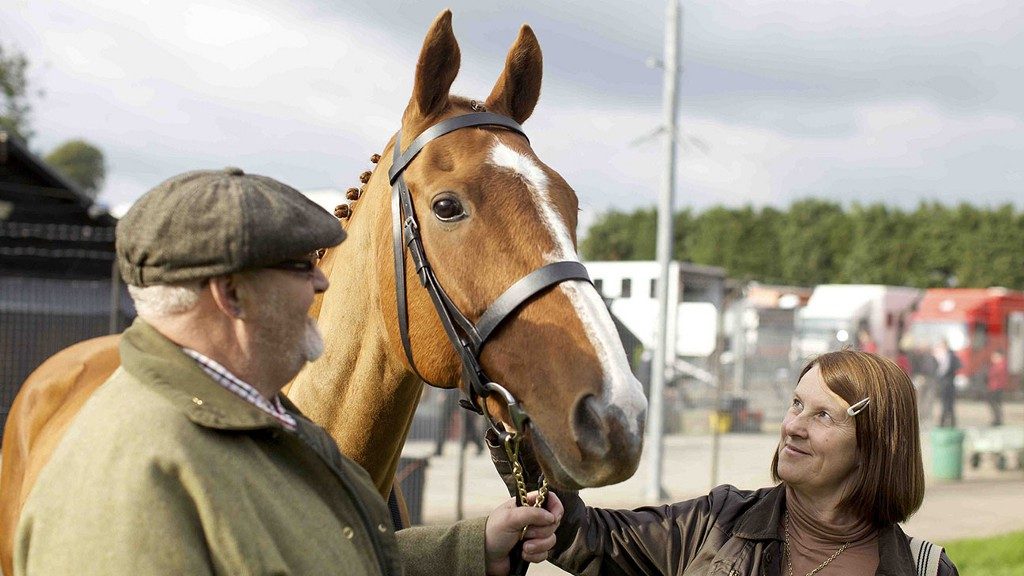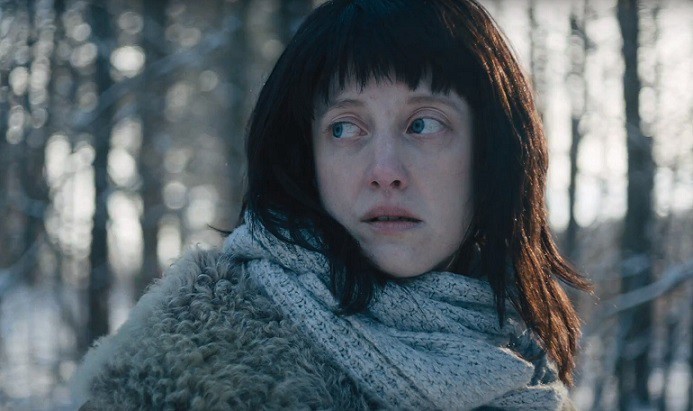Director Louise Osmond started her career at the UK network ITN in their news journalism graduate trainee program, covering stories in Europe and Africa before moving into documentaries. Her most recent feature-length documentary was the BAFTA-nominated, RTS award-winning “Richard III: The King in the Car Park.” Her other work includes the theatrical documentaries “Deep Water” (selected for the Telluride Film Festival, winner of a Grierson Award, and Best Documentary at Rome Film Festival) and “The Beckoning Silence” (winner of an Emmy, Special Jury Award at the Banff Mountain Film Festival, and Grand Prize at New Zealand Mountain Film Festival). (Press materials)
“Dark Horse” opens in theaters in LA and NYC May 6.
W&H: Please give us your description of the film playing.
LO: Set in a former mining valley in Wales, “Dark Horse” is the inspirational true story of a group of friends from a working men’s club who decide to take on the elite “sport of kings” and breed themselves a racehorse. Raised on a tiny patch of land, their foal grows into an unlikely champion, beating the finest thoroughbreds in the land, before suffering a near fatal accident.
Nursed back to health by the love of his owners — for whom he’s become a source of inspiration and hope — he makes a remarkable recovery, returning to the track for a heart-stopping comeback.
W&H: What drew you to this story?
LO: I knew the first time I heard this story that I would do pretty much anything to make it [into a documentary]. It was so funny and moving and life-affirming — a classic rags-to-riches tale. As the producer Judith Dawson and I started to spend time in the valley, it also became clear it was something that ran very deep for the people involved.
It was a story about a community that had lost everything, who felt forgotten by the world; it was about the irrepressible, pied-piper spirit of the barmaid (Jan) who bred the foal and persuaded others to share her outlandish dream; it was about a defiant and exuberant journey into an elite and wealthy world and the pride it gave the village to prove themselves the equal of anyone there.
Above all, it was about the extraordinary bond the characters forged with this beautiful animal that seemed almost like something from a fable, a phoenix rising from the ashes. That’s probably what moved me most; I just desperately wanted to tell that story.
W&H: What was the biggest challenge in making the film?
LO: How to bring alive for the big-screen a story that existed only in a few photographs, a few tapes of home movies, and some racing [archival material] — that was definitely the challenge that kept me up at night. Judith and I knew we wanted to make the film in the valley, in the village itself, so we asked the local community to help us, and they couldn’t have been more welcoming or helpful.
No professional extras were used — it’s all local people and animals. It made for an eventful and often comical shoot, but those are memories that will stay with me forever — in a good way.
W&H: What do you want people to think about when they are leaving the theater?
LO: That the valley the film is set in had suffered really hard times. The people there had been powerless in the face of the mine closures that devastated their community. For a time, I think that got into the soul of the place: they felt cast off and useless, as if they didn’t exist for the outside world.
Jan responded to this by coming up with an idea that was so crazily ambitious and improbable — “I’m going to breed a racehorse in my back garden.” What?! She wasn’t asking anyone’s permission; she wasn’t going to let anyone define her or her dreams.
No one gave her a cat’s chance in hell. But she did it, and in doing it, she ignited something in the people around her. It brought the place back to life, as one of the contributors says.
So what I hope people will take from the film is this: Your circumstances, however tough or bleak, do not define you. What you do is who you are.
W&H: What advice do you have for other female directors?
LO: Really invest time and energy in seeking out and surrounding yourself with the best people. Choose people who inspire you and challenge you, who will share your passion for the film, and be ready to head into the fray for it.
W&H: What’s the biggest misconception about you and your work?
LO: For a time, I think I was seen as a director who made films about quite dark or tragic subjects. I didn’t see them that way at the time, and though my last few films have definitely been about more light-hearted subjects, for me, they all share the same essential element: something in them that moves me deeply and makes me want to tell the story. That’s what fires my passion on every film.
W&H: How did you get your film funded? Share some insights into how you got the film made.
LO: The producer and I first approached the contributors in 2012, but at the time a film company had optioned the story. We told them we’d wait, and a year later, we got our chance to move forward. An executive producer, Julian Ware, came on board, and we joined forces with the production company he ran (DSP).
We all thought the British Film Institute would be a great home for the film. They were holding their first public pitch session at the Sheffield International Documentary Festival in 2013, and we were lucky enough to be one of the films the panel supported. That gave us about half of our estimated budget. I had worked for a commissioning editor, Anna Miralis, at the broadcaster Channel 4 and went on about the story so much she eventually gave in. Then Film 4 came in too, and between them, they matched the BFI’s funds.
It was part of the condition of the BFI grant that we secured a distributor at the start of the project, and Picturehouse Entertainment came on board — a brilliant and innovative indie cinema chain in Britain.
The last piece of the puzzle was finding an international sales agent. Protagonist Pictures had just represented the theatrical documentaries “The Imposter” and “Searching for Sugar Man” and done an amazing job with both, so we were really delighted when they came on board too. That process took about six months. We did much of our pre-production during that time, so we were shooting days after the final paperwork was signed.
W&H: Name your favorite woman-directed film and why.
LO: Barbara Kopple’s documentary “Harlan County, USA” is one of my all-time favorite films. It’s such a brilliant evocation of a time and place and a dispute that literally becomes a matter of life and death. It’s a testament to the power of committing to a story and staying with it to the bitter end.
I think most people would also agree Jane Campion is a real inspiration for directors everywhere — a brilliant filmmaker who talks with such infectious passion, humor, and honesty about her work.







